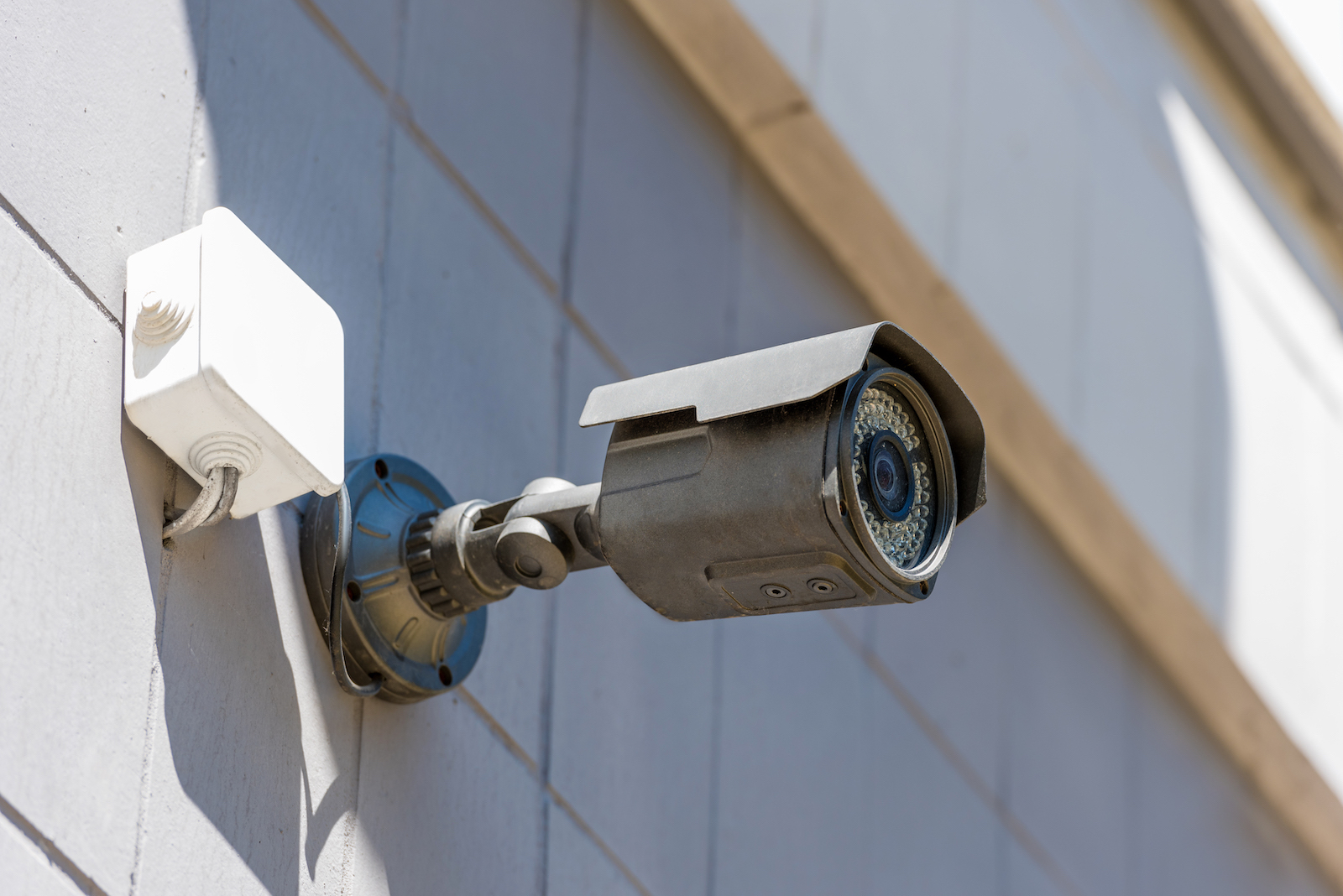June 8, 2023 Annecy Attack: Reflections on Technologies for Security
DOI 10.5281/zenodo.8037476

Annecy Lake
In the heart of Haute-Savoie (France), Annecy is best known for its picturesque lake, winding canals and medieval castle, evoking a peaceful tranquillity. Recently, however, this serene equilibrium was shaken by a major security incident that led to a collective introspection about the city’s preparedness and the security of its residents. On the morning of Thursday, 8 June 2023, a terrifying scene unfolded in a park on the shores of Lake Annecy when a man with a knife seriously injured several children. The man was eventually arrested. As the local community seeks to understand and respond to what has happened, pertinent questions have emerged about how it might be possible to be proactive in dealing with such incidents. So, from a security perspective, the question that keeps coming up is about new technologies, the augmented security. More specifically, their use leading to the following question: could the use of new technologies help to prevent such incidents in the future while reinforcing the security of all? It’s already an issue of growing importance worldwide as cities turn to cutting-edge technologies to improve security and prevent crime. Whether through artificial intelligence (AI), intelligent video surveillance, or advanced facial recognition systems, these tools, demonstrating the evolution of augmented security (Lollia, 2023a) offer new ways of tackling the issue of public security. In essence, security is not a new concept.
However, it takes on a new meaning in today’s digital age. Security technologies, long confined to research laboratories, are now an integral part of our cities and our lives, proof of these new technologies’ pervasiveness (Claverie et al., 2009) of these new technologies. Artificial intelligence, high-tech sensors, surveillance drones, intelligent video surveillance and facial recognition, are some of the technologies integrated into our security systems and are making the case for augmented security (Lollia, 2023a). They aim to create a safe environment, prevent crime and provide a rapid and effective response in the event of an incident. However, their use also raises complex issues. While some see these technologies as an effective solution for protecting communities, others are concerned about the potential implications for privacy and the ethical consequences of increased surveillance due to security pervasiveness(Lollia, 2023b).
This article explores the impact and implications of integrating new security technologies into our daily lives, focusing on the current situation in Annecy. It addresses the current debate on the role and scope of technology in citizen security, highlighting the ethical concerns, challenges and potential benefits. Finally, it examines the cultural and social challenges associated with accepting these new technologies and discusses how citizens can actively participate in creating a safer environment.
New technologies and public security

security augmented : exemple of CCTV camera with IA
Implementing augmented security
With the advent of artificial intelligence (AI) and other advanced technologies, we are now equipped with tools that have the potential to transform our approach to security radically. Among these tools, intelligent video surveillance, proof of enhanced security, stands out for its effectiveness and capabilities. Today’s video surveillance systems are far from passive. Instead, they have become interactive tools that can analyse images in real-time and trigger alarms if necessary. Features such as intelligent video surveillance allow suspects to be tracked in crowds, identify missing persons, or spot suspicious behaviour. These systems can also be interconnected with other technologies for a more integrated security response.
Proactive crime prevention
New technologies now enable us to move from a reactive approach, which involves reacting after an incident, to a proactive approach to preventing criminal acts. For example, AI algorithms can predict incidents by analysing patterns in past data. These predictions can increase security in potentially high-risk areas, adjust police patrols, or warn of potential victims. Similarly, motion detection or behavioural analysis technologies can alert the authorities before a criminal act occurs.
The human role in security augmented
However, it is essential to note that these technological tools cannot and should not replace human intervention. Following on from the work of Evgeni Morosov, it is essential to avoid this solutionist approach (Vigouroux-Zugasti, 2018) which suggests that these technologies alone can solve all security problems. Instead, they should be seen as complementary tools that augment human capabilities in a logic of augmented security, engaging a duo with a human predominance (Lollia, 2021). First responders, whether police, firefighters or ambulance crews, play a crucial role in safety. Their teamwork, empathy and coordination are elements that even AI-enhanced machines cannot replicate. What’s more, the interpretation of data and the final decisions require human supervision to avoid errors or abuse. So while new technologies can enhance security, they must be used judiciously and complement human action.
The debate on video protection and public security
Between a sense of protection and surveillance
There’s no denying that video surveillance provides a greater sense of security. Knowing that public areas are being monitored can deter potential criminals and reassure citizens. However, this feeling of security can turn into a feeling of constant surveillance, raising legitimate concerns about mass surveillance and the possible violation of privacy. This is also the problem with geolocation for personal security, even in hostile environments (Lollia, 2020). The dilemma here lies in striking the right balance between the need for security and respect for privacy. While video surveillance can help prevent and solve crimes, its misguided or excessive use can become a tool for spying or oppression. In France, citizens have the right to expect their privacy to be respected, even in public spaces. It is, therefore, essential to put in place clear regulations and guarantees for a responsible use of these technologies. This is what bodies such as the CNIL are striving to do.
Management of sensitive images and distribution to the general public
Another issue emerging with new security technologies is the management of sensitive images and their dissemination to the general public. In our instantaneous digital world, images can be quickly shared and disseminated on a massive scale, with potentially serious consequences. The dissemination of shocking or sensitive images can traumatise those directly involved and shock the general public. It can also lead to prejudice or misinterpretation. It also raises questions about respect for human dignity, particularly in the case of images of victims or suspects. Often, despite the goodwill of the authorities, it takes time to remove these disturbing videos, as in the case of Samuel Paty‘s beheading, filmed at the entrance to his school and posted on social networks. It is, therefore, essential to strike a balance between transparency, security and respect for human dignity. This requires proper management of images, clear regulations governing their distribution and, above all, ethical and responsible judgement on the part of those who control these technologies and users.
Social acceptance of new security technologies

People using augmented security technology by digital devices.
Cultural problem and perception of security implementation
Despite the apparent benefits of new security technologies, they often encounter cultural and societal resistance. This resistance may be due to unfamiliarity with the technologies, distrust of innovation, or concerns about privacy and individual freedom. Raising awareness and educating the public about new security technologies, how they work, their benefits and limitations is essential to overcome this resistance to change (Moss Kanter, 2011). We need to show how these technologies can improve security without infringing on individual freedoms. Citizens must be informed of the measures taken to protect their data and privacy and be assured that these technologies will not be abused.
Involvement of citizens and recognition of the need for augmented security
The active involvement of citizens in safety initiatives can play a crucial role in the acceptance of new technologies. For example, neighbourhood watch schemes, crime reporting applications or information-sharing platforms can help citizens feel more involved and understand these technologies’ role in security. This involvement can also lead to greater recognition of the need for security. By actively participating in the safety of their community, citizens can become aware of the challenges faced by law enforcement agencies and how new technologies can help overcome them. Therefore, acceptance of new security technologies requires a participatory approach that takes account of citizens’ concerns, encourages their involvement and promotes education and awareness.
What to take away?
In short, new technologies undoubtedly offer powerful tools for enhancing public safety. Intelligent video surveillance, facial recognition and predictive analysis using artificial intelligence can all help to create a safer environment. However, their use also raises significant ethical, human and cultural challenges. There is a delicate balance to be struck between the desire for greater security and the imperative respect for privacy and individual freedoms. For the people of Annecy, who recently experienced an event that shook their sense of security, these issues are not simply theoretical. Their genuine concerns go to the heart of their daily lives and harmonious cohabitation. Social acceptance of new security technologies will largely depend on managing these challenges. Ensuring these technologies are used transparently, ethically and responsibly will be crucial. It is also important to emphasise that people remain at the heart of any security strategy. Despite technological advances, the importance of the human role in security cannot be underestimated. Technologies can complement and enhance human capabilities but cannot replace them. The future of security in our cities will depend on our ability to integrate these new technologies while respecting the rights and freedoms of every individual. This will require a collective approach involving the security authorities, technology developers, and citizens
References :
- Claverie, B., Lespinet-Najib, V., & Fouillat, P. (2009). Pervasion, transparence et cognition augmentée. Revue des Interactions Humaines Médiatisées (RIHM)= Journal of Human Mediated Interactions, 10(2), 85‑99.
- LOLLIA, F. (2020). Organisation en milieu hostile : L’effet de la géolocalisation sur l’organisation en milieu terroriste. Revue des interactions humaines médiatisées, 20(2).
- Lollia, F. (2021). Digital transformation : A literature review of the integration of artificial intelligence into the company’s organisational strategy. An International and Interdisciplinary Perspective on Digital Transformation: The Case of Developing and Emerging Economies./Workshop international” Une perspective internationale et interdisciplinaire sur la transformation numérique”.
- Lollia, F. (2023). Implémentation des technologies de sécurité au sein des organisations et sur la voie publique : Répondre au succès des technologies de surveillance. Territoire (s) et sécurité (s) 2023.
- Moss Kanter, R. (2011). The change wheel : Elements of systemic change and how to get change rolling. Harvard Business School Marketing Unit Case, 312‑083.
- Vigouroux-Zugasti, E. (2018). Morozov Evgeny, 2014. Pour tout résoudre, cliquez ici : L’aberration du solutionnisme technologique: Limoges : Fyp éditions. ISBN 978-2-36405-115-7. 22,50 €. Revue française des sciences de l’information et de la communication, 13. https://doi.org/10.4000/rfsic.3573


